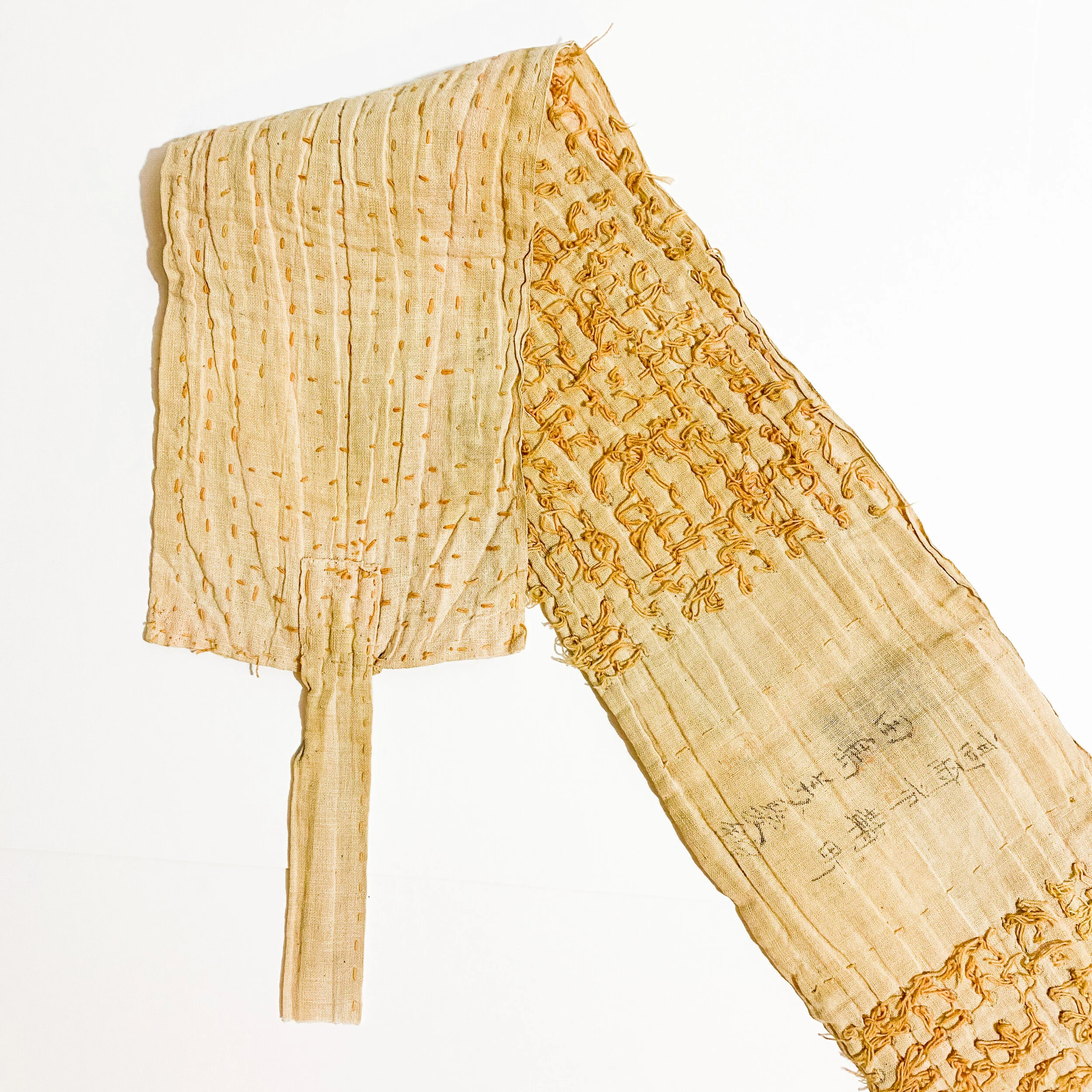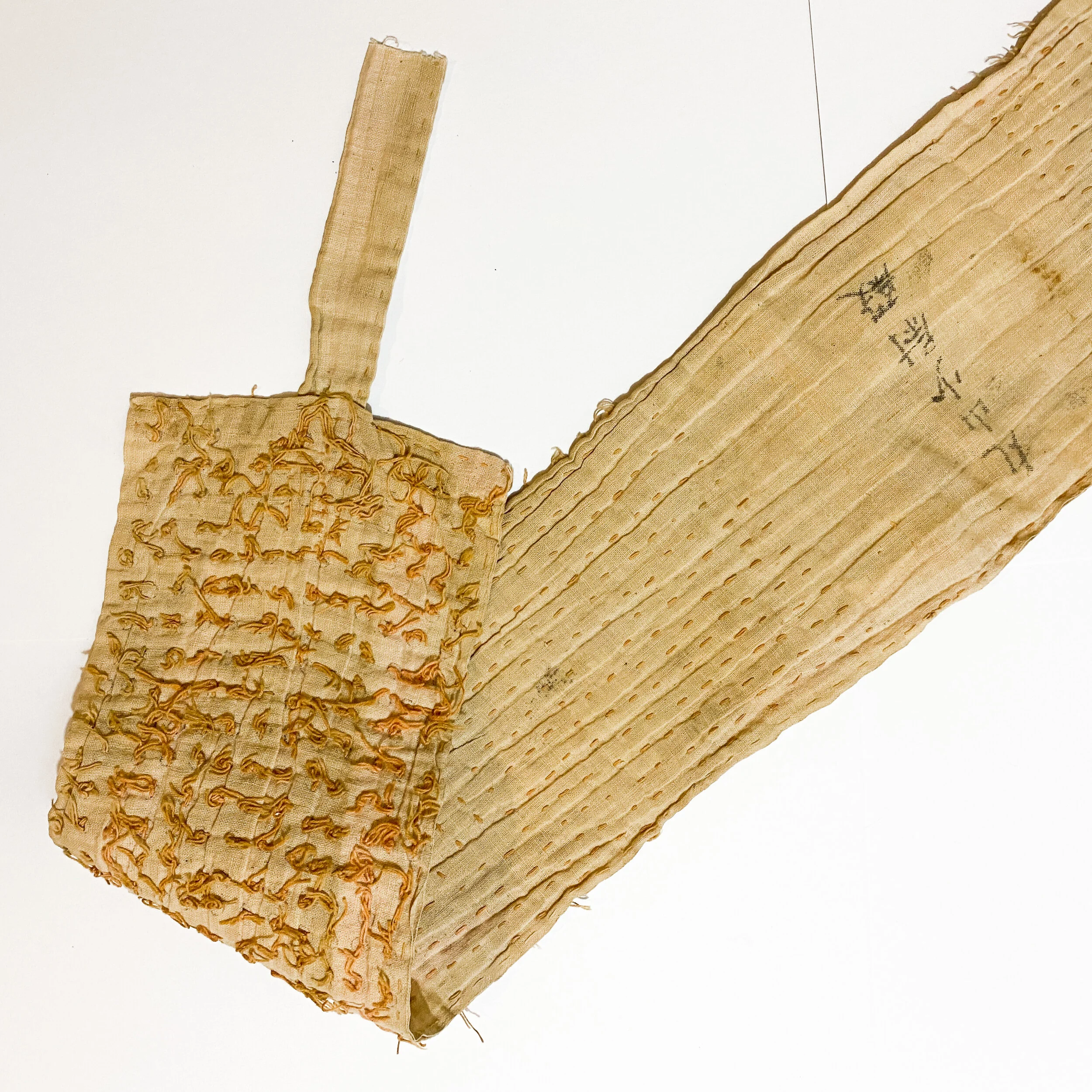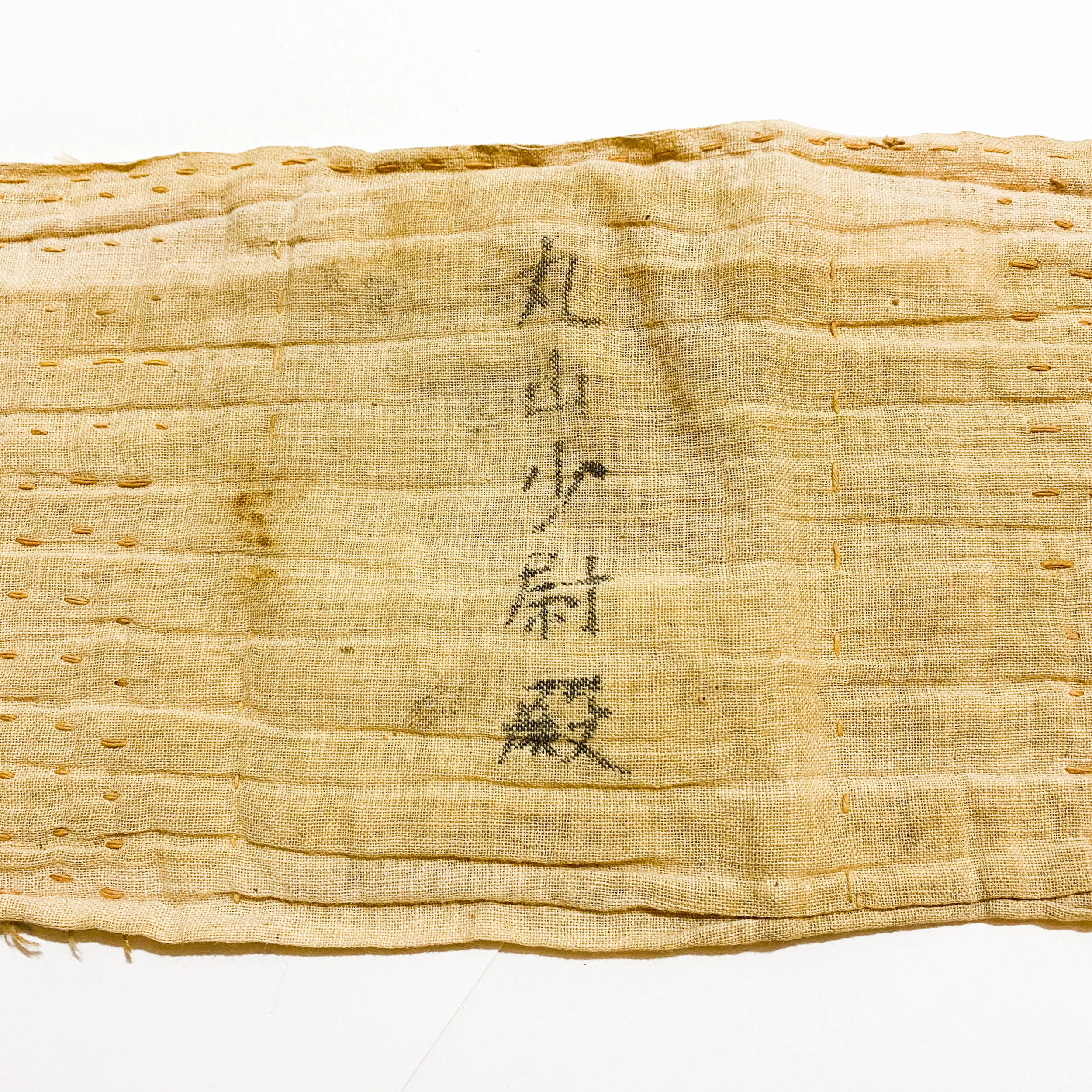Japanese WWII Senninbari 1000 Stitch Belt












Japanese WWII Senninbari 1000 Stitch Belt
This Senninbari belt was a bring back fo a USMC soldier who fought in the Pacific Theater against the Japanese. A Senninbari (千人針, thousand-person-stitches) or One-thousand stitch is a strip of cloth that measures approximately 15 cm (6 in) high and up to 90–120 cm (3–4 ft) or more in length. Each end of the belt (sash) may or may not have strings, snaps or buttons that allow it to be fastened about the waist. Examples that lack these were often tucked into the waist. Other variations were never worn but may have been folded and placed inside helmet liners, pockets or packs. Senninbari were decorated with 1000 knots or stitches, and each stitch was normally made by a different woman.[1][2] Senninbari were given as an amulet by women to soldiers on their way to war.
Senninbari were most commonly made from white cloth with 1000 red stitches added. This is seen as a very lucky color combination.[3] Yellow, red, and green cloth were also used with varying colored threads (yellow-gold, red, white, black, green, etc.) applied. The stitches were usually arranged in multiple rows but might also be placed in patterns creating images of flags, patriotic slogans or tigers. The most common slogan seen was bu-un cho-kyu or "eternal good luck in war". Tigers as stitched or painted artwork were popularly portrayed on senninbari since they were known to be able to roam far away from home and then return safely.
Senninbari took various forms and were not just made as belts. Some forms included hachimaki (headbands), belts, vests, and caps. The rarest forms of senninbari take the form of good luck flags. Senninbari were most commonly made to be worn around the waist. These examples are known as senninbari-haramaki (a haramaki or abdomen belt is traditionally worn in Japan to help maintain good health).